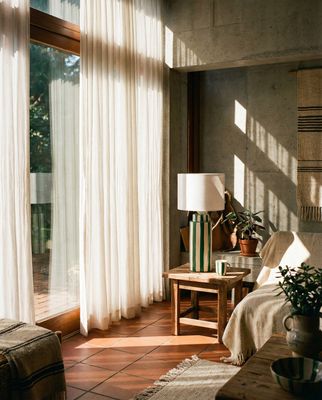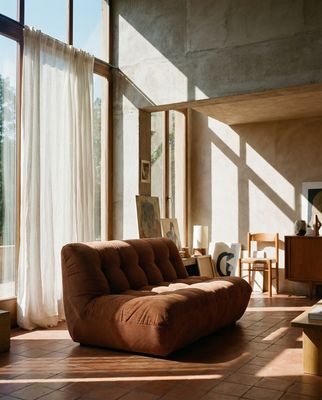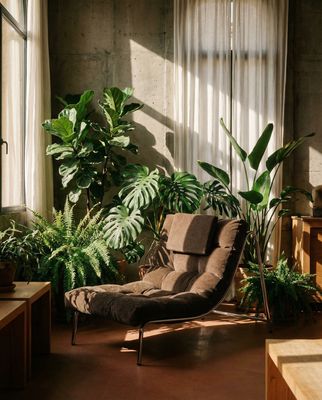Everything about the color Sage
The meaning of the color sage and color combinations to inspire your next creation.
Browse images in the color sage
What color is sage?
Sage is a muted, earthy green shade with a hint of gray, reminiscent of the soft, dusty leaves of the sage plant. This color often evokes a sense of calmness and tranquility, making it a popular choice for interior design and fashion.
What are similar colors to sage?
For variations within the same soothing and natural spectrum as sage, consider:
- Beige (#F5F5DC) shares sage's muted and earthy qualities, offering a neutral backdrop with a warm undertone.
- Taupe (#483C32) provides a similar earthy feel with a more pronounced gray tone, enhancing sage's natural appeal.
- Olive (#808000) is a deeper, more intense green that complements sage's subtlety with its rich, earthy depth.
- Mint (#98FF98) offers a lighter, fresher green that pairs well with sage's muted tones for a refreshing contrast.
What color goes with sage?
To complement sage's soft, natural tones, consider pairing it with:
- Lavender (#E6E6FA) adds a touch of elegance with its soothing, purple-tinged hue.
- Cream (#FFFDD0) provides a warm, neutral contrast that enhances sage's earthy qualities.
- Peach (#FFE5B4) offers a soft, warm contrast that harmonizes beautifully with sage's muted green.
- Coral (#FF7F50) introduces a vibrant, warm hue that enlivens sage's subtle tones.
What color conflicts with sage?
To avoid clashing with sage's muted, earthy tones, consider avoiding:
- Black (#000000) can overpower the softness of sage.
- White (#FFFFFF) risks washing out sage's subtle hues.
- Gray (#808080) could dull the vibrancy of sage.
- Bright Red (#FF0000) may create a jarring contrast with sage's calm, natural tones.
What does the color sage represent?
Sage represents wisdom, tranquility, and harmony, often associated with nature and the healing properties of the sage plant. Psychologically, sage is calming and soothing, promoting relaxation and balance. In art and design, sage is used to create serene and peaceful environments, often paired with natural materials and textures to enhance its earthy appeal.
What's the history of sage?
The color sage derives its name from the sage plant, known for its soft, gray-green leaves and aromatic properties. Historically, sage has been used in various cultures for its medicinal and culinary benefits, which influenced its association with wisdom and healing. In modern times, sage has become a popular color in interior design and fashion, valued for its versatility and calming presence.
Color Variations
Shades
Tints
Hues
Color Palettes
Monochromatic
Complementary
Analogous
Triadic
Tetradic
Images with sage color
Color Conversions
#BCB88Argb(188, 184, 138)rgb(74%, 72%, 54%)0, 2, 27, 26hsl(55, 27%, 64%)55, 27, 74#BCB88A74, -6, 2442, 47, 3174, 25, 10410111100, 10111000, 10001010Color(red: 0.7372549019607844, green: 0.7215686274509804, blue: 0.5411764705882353)UIColor(red: 0.7372549019607844, green: 0.7215686274509804, blue: 0.5411764705882353, alpha: 1.0)Color(0xFFBCB88A)










